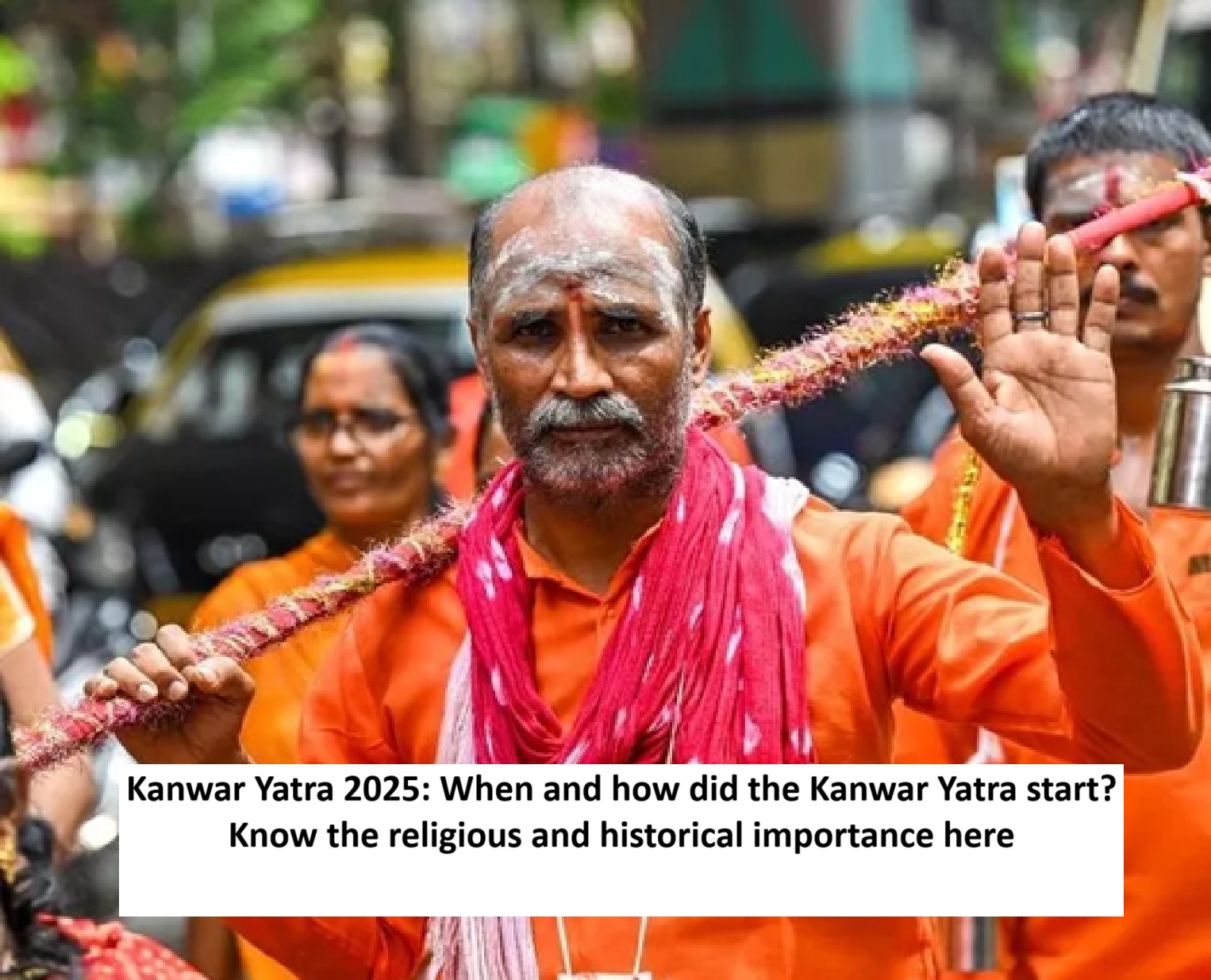
News Topical, Digital Desk : Kanwar Yatra is an ancient Hindu pilgrimage in which devotees, fondly called Kanwariyas, take Ganga water and offer it in the temples of Lord Shiva. This journey holds immense importance especially in the month of Sawan.
This tradition is linked to mythology and spiritual faith, and today it has become one of the biggest religious pilgrimages in the world. This pilgrimage is a symbol of unwavering faith and devotion towards Lord Shiva.
The determined journey of Shiva devotees in Saavan
Every year in the month of Sawan, when the raindrops cool the earth, lakhs of devotees of Lord Shiva wear saffron clothes and set out with Kanwar. They have a bamboo Kanwar on their shoulders, in which a pot filled with Gangajal hangs. These devotees take water from the Ganga and other holy rivers to Shiva temples and perform Jalabhishek on the Shivling. This holy tradition is called Kanwar Yatra, whose roots are connected to very ancient mythology.
Mythological origin: Neelkanth Mahadev and Ganga water offering
The origin of the Kanwar Yatra is related to the famous story of Samudra Manthan. When the gods and demons churned the ocean together, the poison Halahal came out, which could lead to the destruction of the entire creation. Then Lord Shiva drank the poison and held it in his throat, due to which he was called Neelkanth.
To calm this sacrifice and penance of Lord Shiva (when Kanwar Yatra starts), the gods and sages offered Gangajal to him so that the intensity of the poison could be cooled. This tradition of offering Gangajal is alive today in the form of Kanwar Yatra. Shiva devotees believe that by offering Gangajal, Lord Shiva is pleased and the sins of the devotees are destroyed.
Historical and Cultural Development (Kanwar Yatra history)
Although this tradition has its roots in ancient mythological texts, it developed as a mass participation in the medieval period. Devotee poets Tulsidas and Surdas have also mentioned it in their hymns and poems. Earlier this yatra was performed peacefully by devotees from villages and towns, but in the 20th century it turned into a massive mass movement.
With the help of road arrangements, religious awareness and social cooperation, this journey has now taken an organized and festive form. Today, lakhs of Kanwariyas bring water from holy places like Haridwar, Gangotri, Gomukh, Sultanganj and offer it in temples like Baba Baidyanath (Deoghar), Kashi Vishwanath, Neelkanth Mahadev etc. Sometimes they walk for 100-200 kilometers.
This is not just a journey of the body, it is a surrender of the soul
Kanwar Yatra (why kanwar yatra started) is not just a journey of the body, it is a sadhana of the soul. Many devotees perform Dak Kanwar, in which the vessel is not placed on the ground until the water is offered. Seva camps are set up on the route of the yatra, where free food, medicines and rest are arranged.
The entire atmosphere is filled with Shiva chants and bhajans of "Bol Bam". These yatras become like moving temples. Where every devotee becomes a servant, a seeker, and a lover.
A faith that never stops or gets tired
Kanwar Yatra is not just a pilgrimage, it is a celebration of faith, endurance and collective unity. This tradition shows how spiritual values do not change with time, but become even stronger.
Read More: Magh Mela 2026: How long will the Magh Mela last, what will be the dates of the royal bath?
--Advertisement--

 Share
Share



